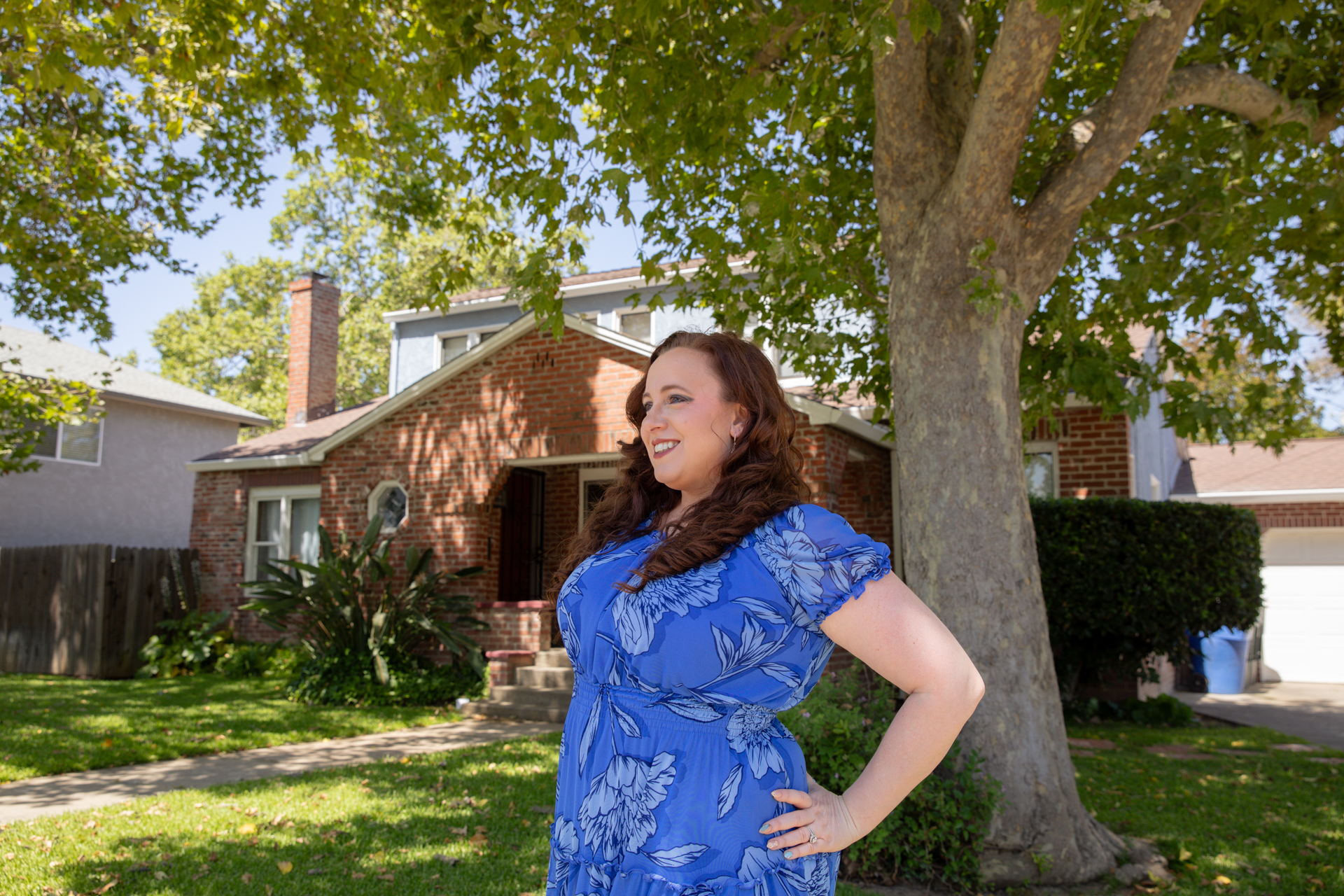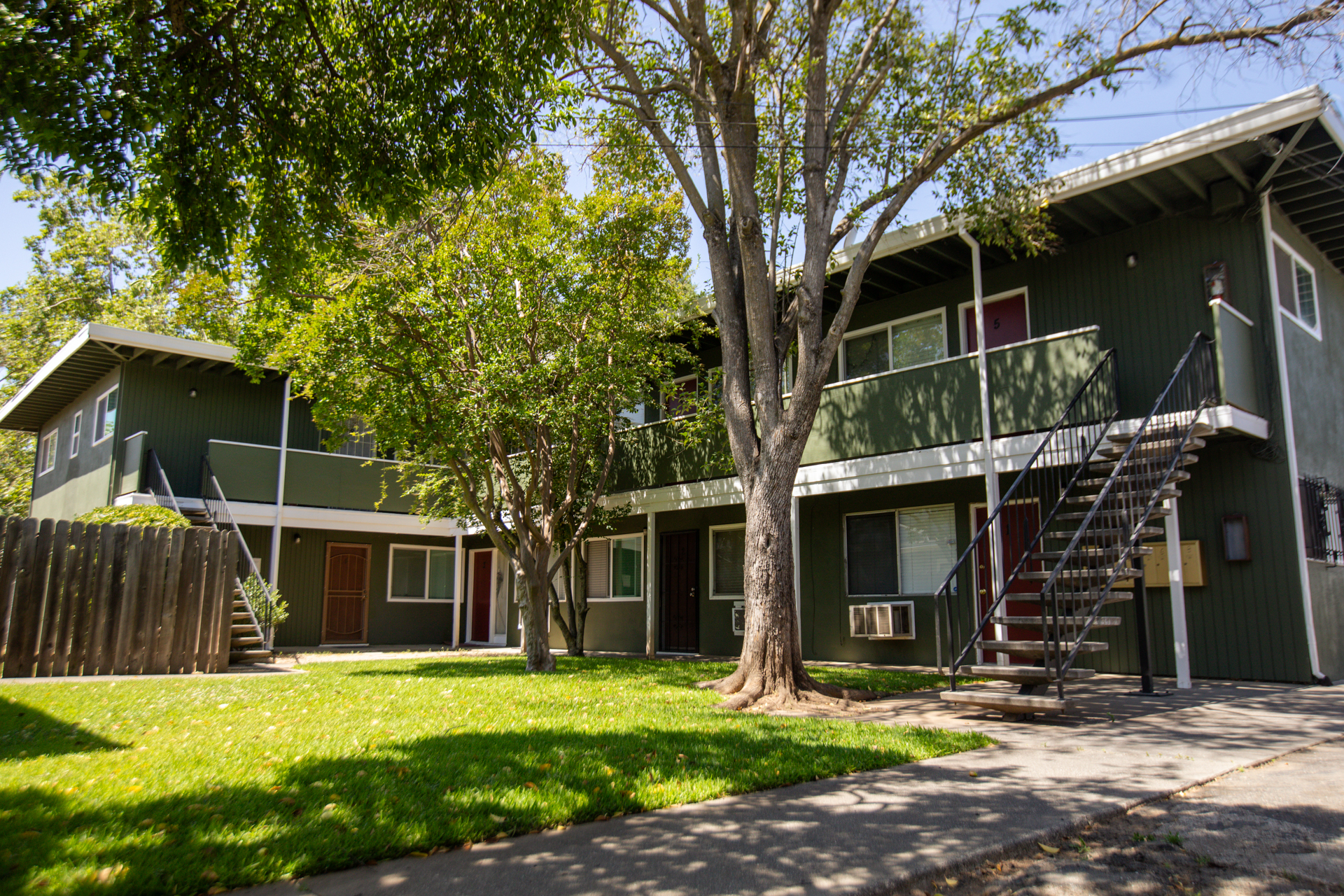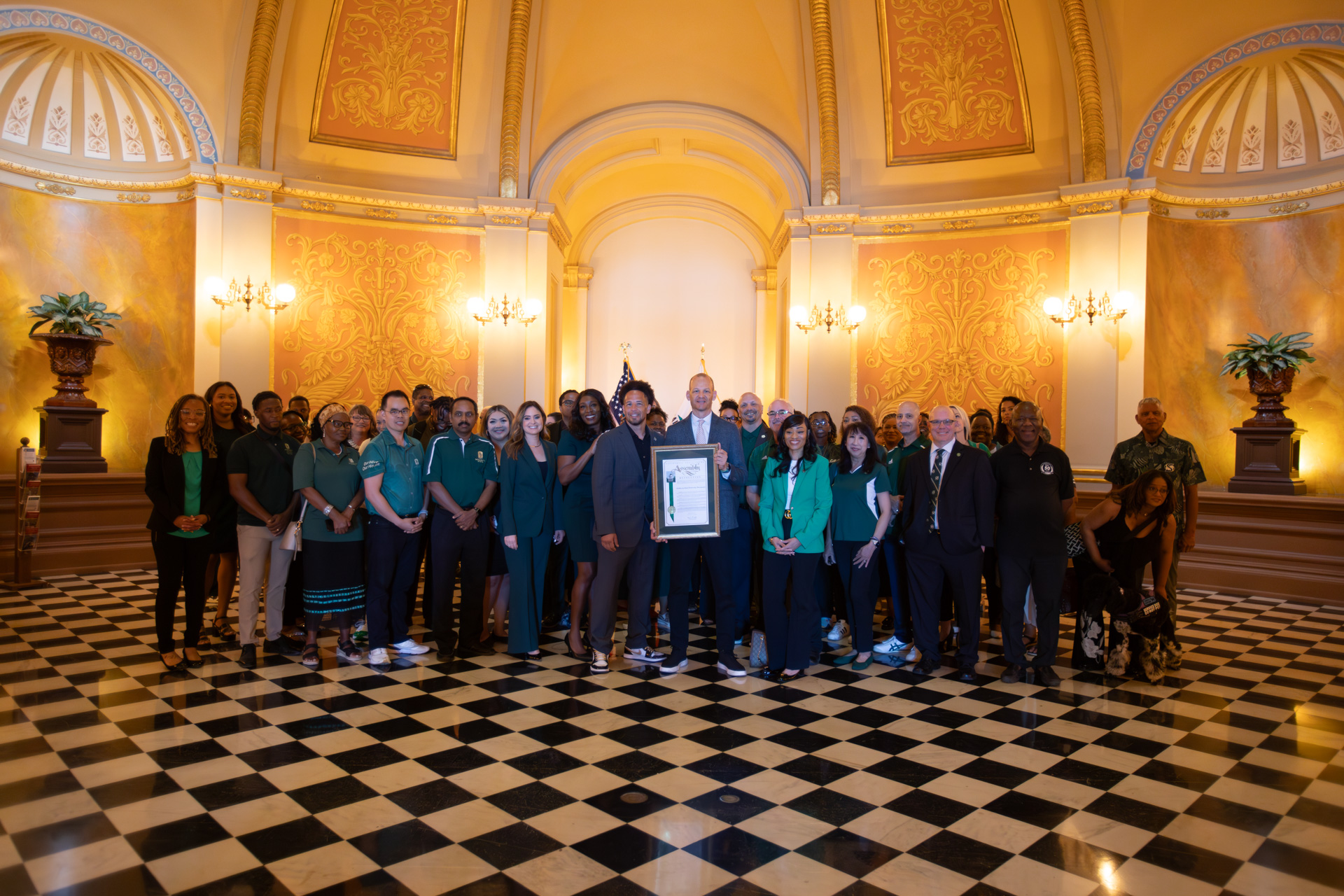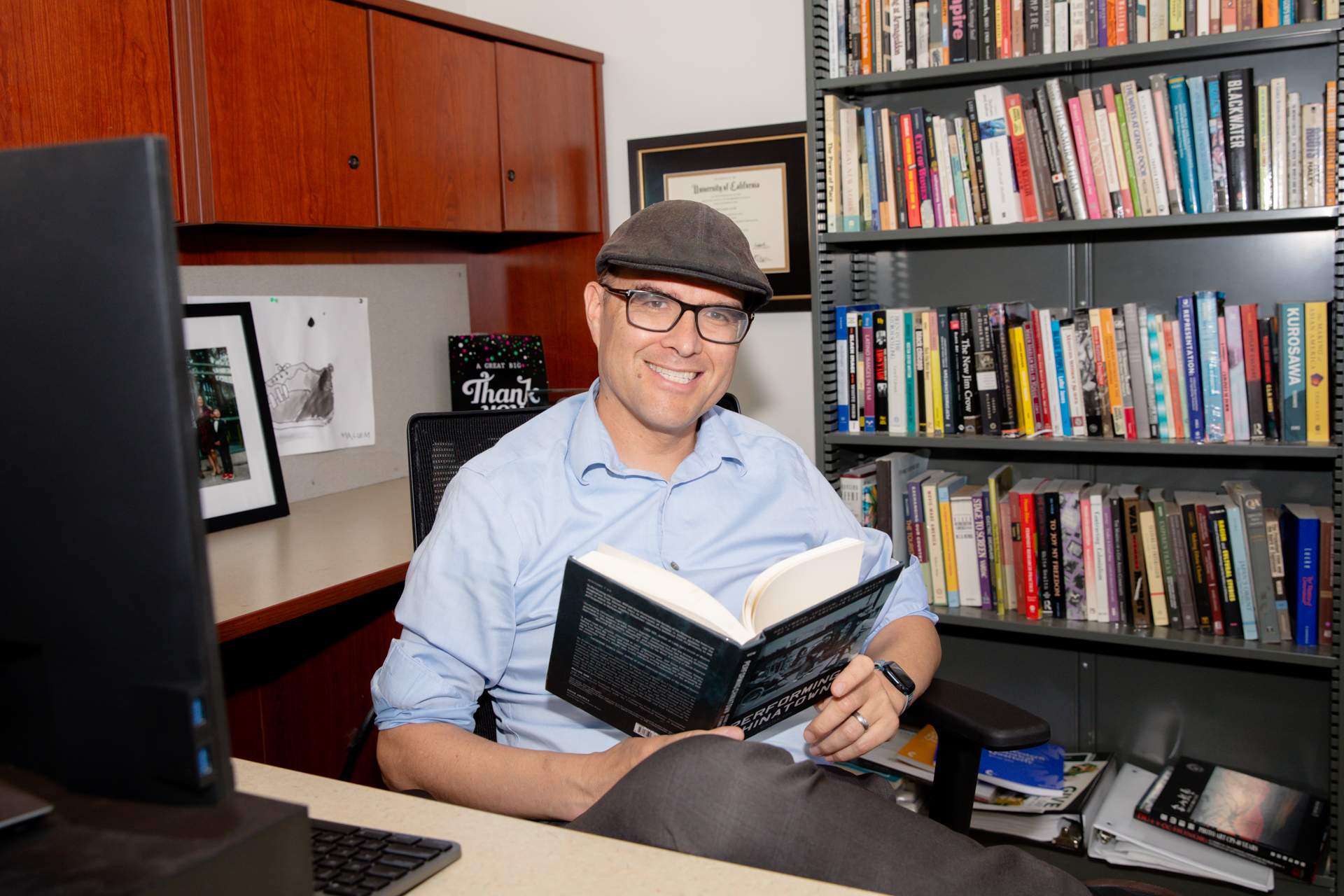Story Content
Public History student’s research helps illuminate life of Sacramento civil rights legend

June 26, 2024
There’s nothing remarkable about the house at 4216 Lotus Ave. in Sacramento’s Sutterville Heights neighborhood. Passersby likely don’t know that for decades it was home to a civil rights legend.
With the help of a Sacramento State student, however, that may change.
Research from Alyssa M. Garcia, who just completed her second year in Sac State’s Public History master’s program, played a key role in a recent short documentary about Virna Canson, a Sacramento civil rights pioneer who lived in the house from 1954 until her death in 2003.
Garcia’s work, like that of her classmates, has been used to support a bid for the property to be designated a National Historic Landmark.
"I hope people understand the impact of Virna Canson's contributions to society and that she is the female version of Martin Luther King Jr. in the West,” Garcia said. “She is the 'Mother of Civil Rights in the West.’ She deserves recognition, she deserves to be crystallized into history books."
Garcia was moved to study history following the 2020 police killing of George Floyd and ensuing protests and national discourse about race.
“The best way I thought I could understand, navigate and move forward in that type of atmosphere was to know its history and be able to hold the really important conversations with a knowledge base,” she said.
Garcia graduated from Sac State with a bachelor’s degree in History in 2022 and immediately entered the University’s Master’s in Public History program. A key component of that program has been its partnership with Sacramento’s African American Experience Project, through which students have helped identify significant people and places in the city’s Black community.
Virna Canson, beginning in the 1950s, was a key figure in many of California’s civil rights struggles, including housing discrimination and affirmative action. From 1974 to 1988 she was director of the NAACP’s Western region.
In the spring of 2023, Garcia was assigned the Canson house, quickly learning the work would be a heavier lift than that of her classmates. Her research showed that the Canson family had constructed an apartment building at the back of their property, which, during a time of rampant housing discrimination, they rented out without racial restrictions.
“I acquired a little bit more of a workload than my peers because I also had to do the apartment that went with it,” she said. “I was like, ‘Why me?’ But honestly, it ended up being just a gem of a project.”

Garcia looked at property records for the house and apartment and spent a day at the African American Museum and Library at Oakland, which houses Canson’s papers and collections. There Garcia researched Canson’s life to help establish the historical significance of her home.
“I really took it file by file, picture by picture. I looked at everything, I didn't leave any stone unturned in her collections,” she said.
Research by Garcia and her fellow Public History students was used as the basis for applications to the U.S. Department of the Interior to place the locations onto the National Register of Historic Places.
Those applications are pending, but Garcia’s work found another outlet. As she was conducting her research, Sacramento filmmaker Chris Lango began working on a short documentary about Canson, funded through a grant from the city’s Office of Arts and Culture.
In August 2023, Lango asked Sacramento Public Library Archivist James Scott if the library had information about Canson. Scott replied that one of his recent interns – Garcia – had just finished a research project on Canson’s house.
Lango, also a video producer for the Center for Sacramento History, contacted Garcia and quickly knew he wanted to include her in the film. She was the second person he spoke with, meaning that, in addition to being featured, her work became a jumping off point for Lango’s future research.
"I was lucky enough to interview her before I interviewed other people,” he said. "In just going through what she had done and in speaking with her, it motivated me to do more research and find more advertisements about the Canson house and the apartment building in the back and to capture more footage.”
Lango’s film was released on YouTube on Mother’s Day, intentionally chosen to reflect Canson’s status as “Sacramento’s Mother of Civil Rights.”
Rebekkah Mulholland, director of the Public History master’s program, said the African American Experience Project of which Garcia’s research was a part is a perfect example of how the program not only provides its students real-world skills but also instills in them the importance of serving the community.
“Since we are community oriented, our students understand the responsibility to the work they do, not just at Sac State but beyond,” Mulholland said. “They take their education and training out with them into the world, demonstrating that Sac State has prepared them for the workforce, thus influencing others to want to join our program.”
Garcia is on track to graduate this fall. She wants to become a professor, but her graduate work has also inspired her to want to continue documenting public history.
Participating in Lango’s film, she said, was part of that inspiration.
"Being featured in the documentary not only validated my work, but also highlighted the importance of preserving and understanding significant contributions in preserving our civil rights figures, especially local ones.”
Editor's Pick
Media Resources
Faculty/Staff Resources
Looking for a Faculty Expert?
Contact University Communications
(916) 217-8366
communications@csus.edu


